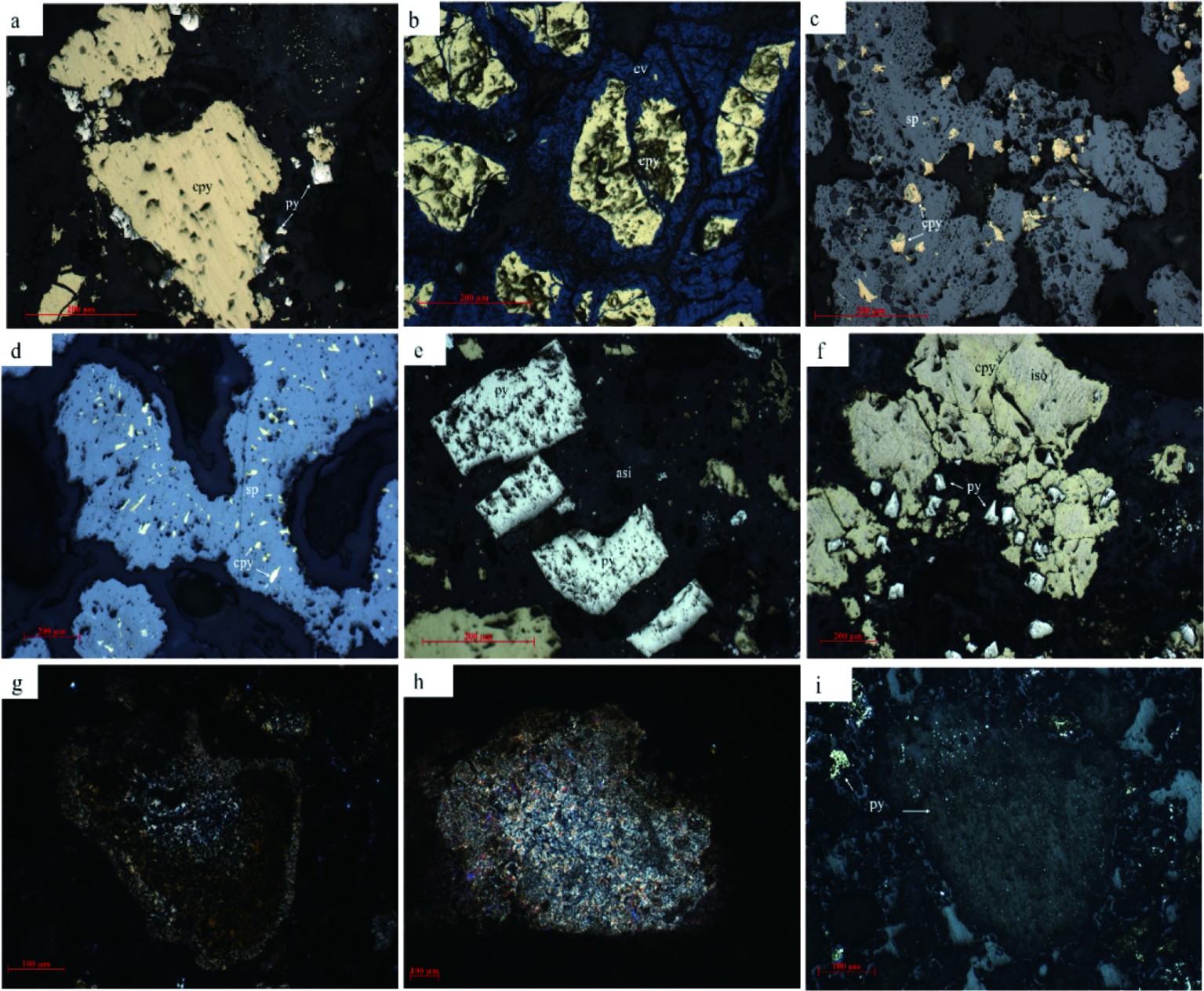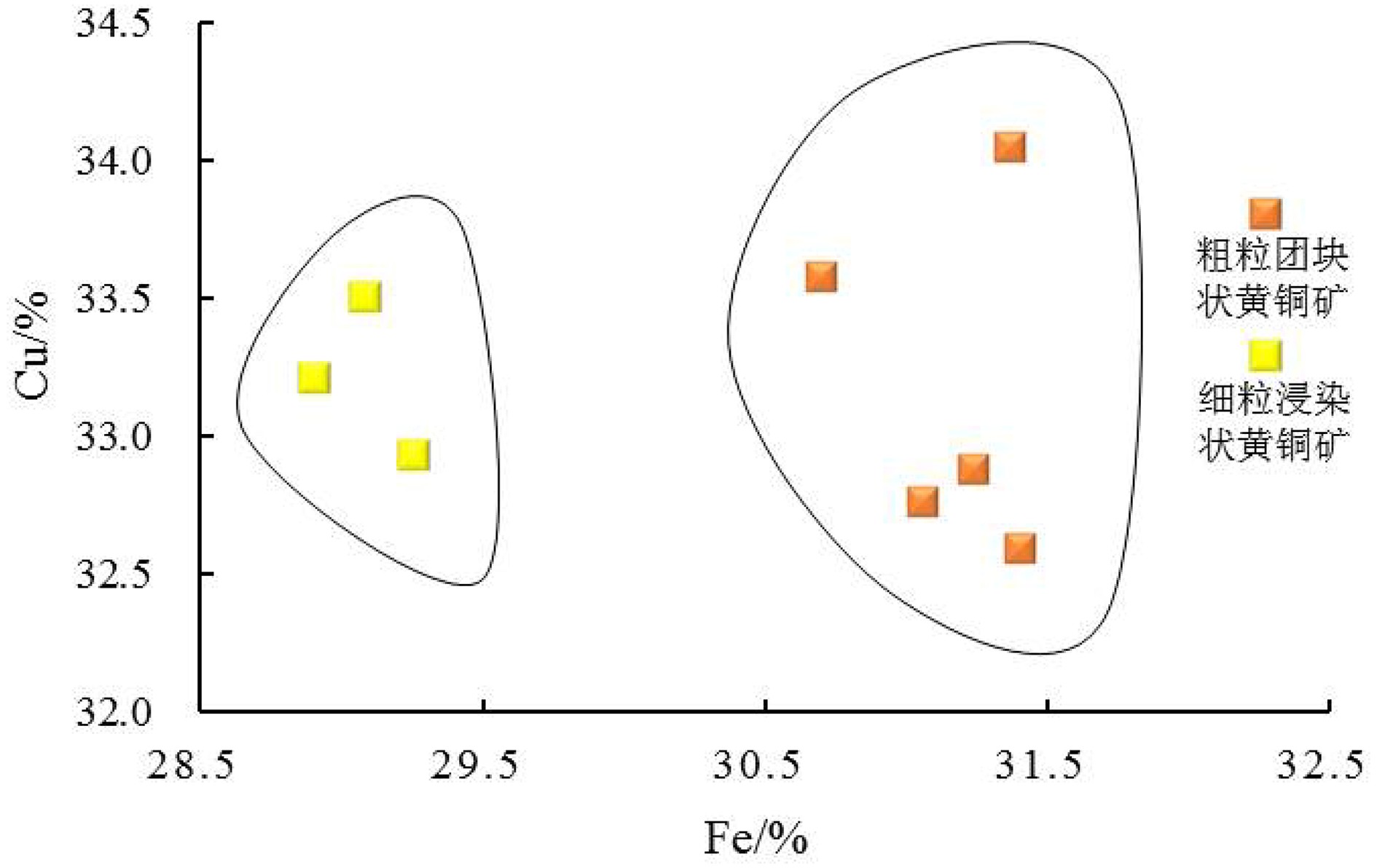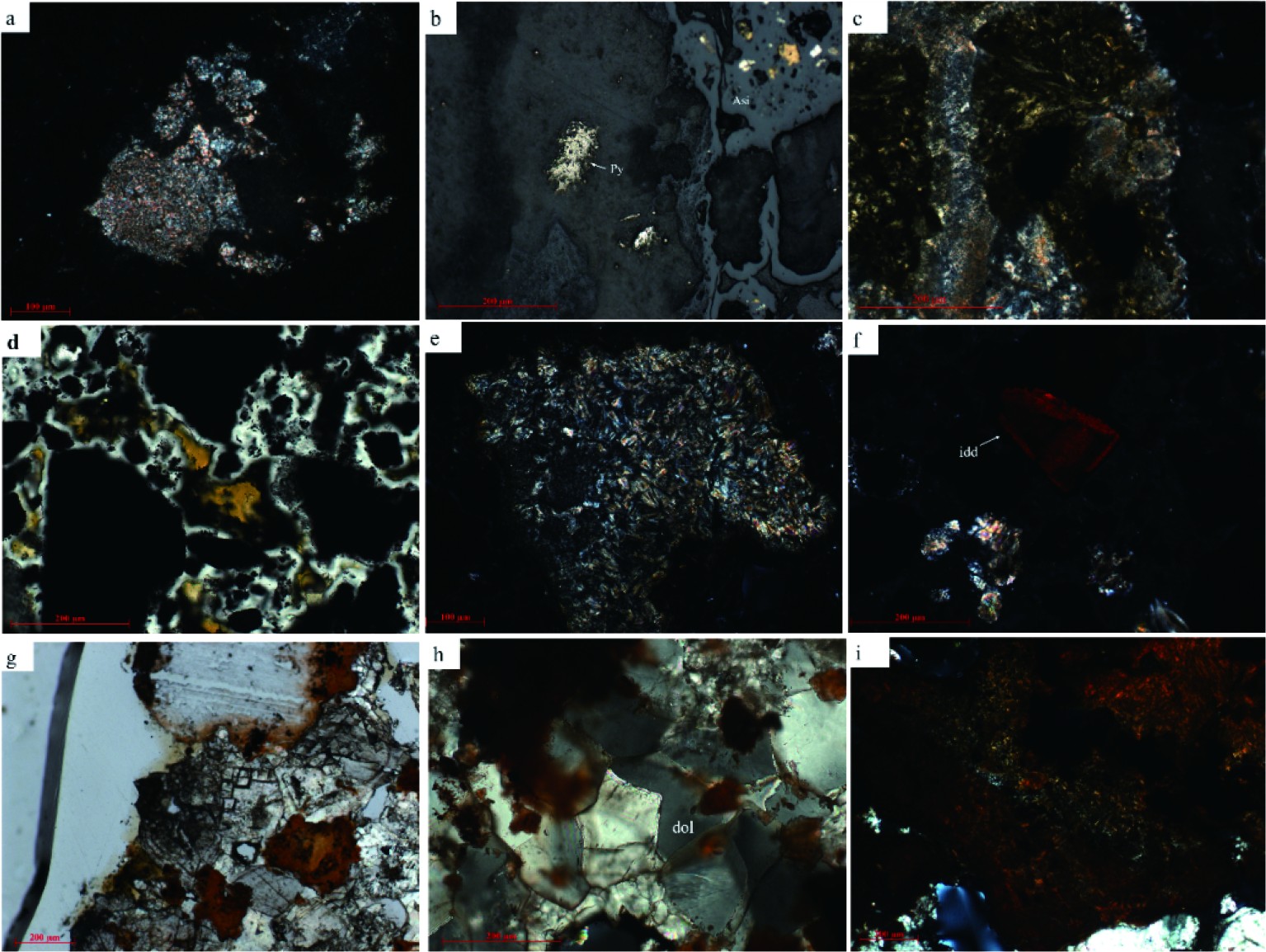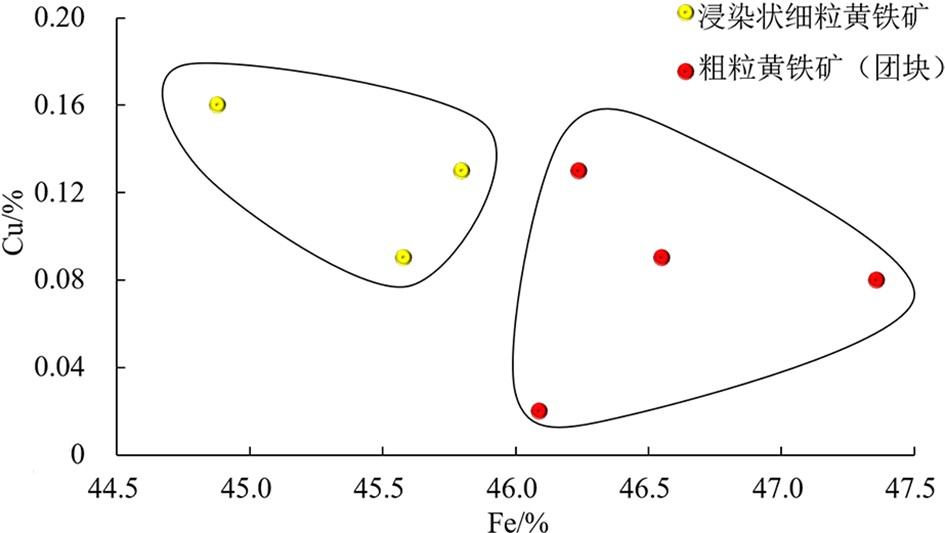Mineralogical and geological significance of hydrothermal products: A case from the Chihu hydrothermal field, South Mid-Atlantic Ridge
-
摘要: 赤狐热液区是2019年中国在南大西洋中脊23.7°S发现的一个位于拆离断层上盘的热液区。本文利用光学显微镜、电子探针、TerraSpec Halo矿物鉴别仪和XRD粉晶衍射仪,对该区热液产物进行了矿物学和矿物成分研究。结果表明,赤狐热液区热液产物可分为硅质硫化物、硅质矿化角砾岩和碳酸盐质矿化角砾岩。这些产物均由不等量蚀变岩石碎屑、团块状硫化物角砾、细粒浸染状硫化物以及硅质和碳酸盐质胶结基质组成。团块状硫化物与细粒浸染状硫化物之间在矿物组合、结构构造和矿物成分上的差异指示该热液区可能经历了多个喷发周期,蚀变岩石碎屑的复杂性和多样性指示该热液区除了基性源岩外,还可能受到超基性源岩影响。Abstract: The Chihu hydrothermal field is a mineral occurrence related to a detachment fault structure. It was discovered in 2019 at 23.7°S of the southern mid-Atlantic ridge. The detachment fault is believed having important influences on the hydrothermal activity and mineral deposition of the field. In this paper, mineralogy and mineralogy chemistry studies are conducted for the hydrothermal products by means of transmission-reflection microscope, Terraspec Halo mineral discriminator and X-ray diffraction (XRD). The results suggest that the hydrothermal products are mainly composed of siliceous sulfides, siliceous mineralized and carbonate mineralized breccias consisting of altered rock fragments, massive sulfide breccia, fine-grained disseminated sulfide, and siliceous and carbonate cemented matrix. The difference in mineral composition, structure and mineral composition between massive sulfide and fine-grained disseminated sulfide indicates that the hydrothermal area may have experienced multiple times of eruption cycles. The complexity and diversity of altered rock fragments suggest that in addition to basic source rocks, this hydrothermal field may also be affected by ultrabasic source rocks.
-
-
图 3 硅质硫化物的矿物特征
a. 粗粒黄铜矿(cpy)边部交代小的粒状黄铁矿(py),反射单偏光;b. 铜蓝(cv)包围黄铜矿(cpy),反射单偏光;c. 闪锌矿(sp)交代有黄铜矿(cpy),反射单偏光;d. 闪锌矿(sp)表面有呈“乳滴”状黄铜矿(cpy),即“黄铜矿病”,反射单偏光; e. 自形黄铁矿(py)被非晶质硅胶结(asi),反射单偏光;f. 黄铜矿(cpy)表面析出有呈固溶体出溶结构浅粉色等轴古巴矿(iso),并有交代的粒状黄铁矿(py),反射单偏光;g. 皂石由于Fe含量的不同显示出不同级别干涉色,透射正交偏光;h. 呈鳞片状滑石,透射正交偏光;i. 皂石中充填有细小的黄铁矿颗粒,且晚于皂石形成,应为后期富含金属的流体经过皂石在其表面通过卸载作用形成(图g同视域反射单偏光下视图)。
Figure 3. Mineralogical characteristics of siliceous sulfides
图 5 矿化角砾岩中蚀变岩屑的矿物特征
a.细腻鳞片状滑石,似蚀变辉石形成,透射正交偏光;b.皂石中夹杂黄铁矿,反射单偏光;c.皂石中夹杂黄铁矿,透射正交偏光;d.夹杂在无定形硅(白色)中的橙玄玻璃(橙黄色),透射单偏光;e.短柱状阳起石,部分可见多色性,整体呈浅黄色,透射正交偏光;f.红色伊丁石,呈橄榄石假象,下部可见蚀变的他形橄榄石,透射正交偏光;g.菱镁矿呈细粒集合体,发育菱形解理,透射单偏光;h.粒状白云石(dol),解理发育,透射正交偏光;i. 白云石和菱镁矿被红色Fe氢氧化物覆盖,透射正交偏光。
Figure 5. Mineral characteristics of altered debris in mineralized breccia
图 6 矿化角砾岩中金属硫化物的矿物特征
a.硅质碎屑角砾硫化物中蚀变非金属矿物分布,透射正交偏光;b.碳酸盐质碎屑角砾硫化物中蚀变非金属矿物分布,透射正交偏光;c.闪锌矿(sp)、黄铜矿(cpy)、黄铁矿(py)三者共生,被非晶质硅(asi)胶结,反射光;d.铜蓝(cv)与黄铜矿共生,反射单偏光;e.共生的黄铁矿(py)和白铁矿(mar),交代有黄铜矿(cpy),反射单偏光;f.浅橘色矿物Phase A出溶在黄铜矿(cpy)中,表面可见被Cu硫化物切割,反射单偏光;g.自形-半自形黄铜矿(cpy)和黄铁矿(py)松散分布在非晶质二氧化硅中,反射单偏光;h.不规则黄铁矿(py)赋存在碳酸盐矿物中,反射光;i. 黄铁矿(py)、黄铜矿(cpy)、斑铜矿(bor)三者共生,赋存在碳酸盐矿物中,反射单偏光。
Figure 6. Mineralogical characteristics of metallic sulfides in mineralized breccia
表 1 赤狐热液区样品特征
Table 1 Characteristics of Chihu hydrothermal samples
样品编号 样品种类 样品特征 矿物种类 13-2 硅质硫化物 整体呈黑色,致密结构,表面存在黄色的硫单质。可见流体通道构造。 黄铁矿、黄铜矿、铜蓝、皂石、滑石、针铁矿 13-5 硅质硫化物 整体呈黑色,表面可见呈颗粒状的细小黄铁矿,可见通道构造,硫化物呈浸染状出现在二氧化硅基质中。 黄铁矿、黄铜矿、闪锌矿、铜蓝、等轴古巴矿、皂石、滑石、针铁矿 13-3 硅质矿化角砾岩 表面被大量红色Fe氢氧化物覆盖,内部可见硫化物团块,岩屑呈大小不等、未见磨圆的角砾分布于硅质和碳酸钙质基质中。 黄铁矿、黄铜矿、斑铜矿、针铁矿、白云石、菱镁矿、蛇纹石、滑石 13-7 硅质矿化角砾岩 呈长条状,质地松散细腻,易碎,表面存在细小的黄铁矿颗粒,可见粒度不等的棱角状碎屑。 黄铁矿、黄铜矿、闪锌矿、皂石、滑石、蛇纹石、针铁矿 13-1 碳酸盐质矿化角砾岩 可见粒度不等的棱角状蚀变岩屑和硫化物角砾不均匀分布于硅质基质中。 黄铁矿、白铁矿、黄铜矿、闪锌矿、Phase A、橙玄玻璃、皂石、滑石、伊丁石、阳起石 表 2 矿物种类及分布
Table 2 Minerals and their distribution
样品种类 矿物种类 化学式 硅质硫化物 黄铁矿(Pyrite) FeS2 闪锌矿(Sphalerite) ZnS 黄铜矿(Chalcopyrite) CuFeS2 等轴古巴矿(Isocubanite) CuFe2S3 铜蓝(Covellite) CuS 皂石(Saponite) Nax(H2O)4{Mg3[AlxSi4-xO10](OH)2} 滑石(Talc) Mg3[Si4O10](OH)2 针铁矿(Goethite) FeOOH 矿化角砾岩 黄铁矿(Pyrite) FeS2 白铁矿(Marcasite) FeS2 闪锌矿(Sphalerite) ZnS 黄铜矿(Chalcopyrite) CuFeS2 Phase A Cu10Fe3S11 斑铜矿(Bornite) Cu5FeS4 皂石(Saponite) Nax(H2O)4{Mg3[AlxSi4-xO10](OH)2} 滑石(Talc) Mg3[Si4O10](OH)2 针铁矿(Goethite) FeOOH 伊丁石(Iddingsite) H4MgFe2[Si3O12]·2H2O 橙玄玻璃 蛇纹石 Mg6[Si4O10](OH)8 白云石 CaMg[CO3]2 菱镁矿 Mg[CO3] 阳起石 Ca2(Mg,Fe2+)5[Si8O22](OH)2 表 5 闪锌矿电子探针分析结果
Table 5 Chemical composition of sphalerite
% 矿石类型 S Zn Fe Ni Pb Co Cu 总量 矿化角砾岩 32.96 57.86 3.66 0 0 0.15 2.71 97.34 33.23 60.22 3.60 0 0.06 0.18 0.40 97.68 33.38 62.97 3.36 0 0.08 0.08 0.29 100.15 33.22 58.19 8.91 0 0 − 0.32 100.63 33.14 57.77 8.35 0 0.05 − 0.48 99.78 32.88 57.65 9.39 0 0.10 − 0.34 100.36 32.17 57.27 9.10 0 0 − 0.27 98.82 硅质硫化物 “干净”闪锌矿 33.76 61.89 2.81 0 0.31 0.09 1.20 100.06 32.02 63.91 2.02 0 0.15 0.06 0.78 99.94 33.16 61.63 1.34 0.06 0.80 0.06 2.70 99.74 32.42 63.24 2.10 0 0.14 0.06 1.13 99.09 32.69 63.74 2.56 0 0.26 0.01 0.89 100.12 “黄铜矿病”
闪锌矿33.41 57.01 8.01 0 0.22 0.08 0.08 98.81 32.95 59.58 6.39 0.02 0.20 0.06 0.19 99.35 表 3 黄铜矿电子探针分析结果及结晶分子式
Table 3 Chemical composition and crystalline formula of chalcopyrite
% 矿石类型 Cu Fe S Zn Pb 结晶分子式 硅质硫化物 粗粒黄铜矿 32.59 31.40 34.56 0 0.13 Cu0.94Fe1.03S2.00 34.05 31.37 34.88 0 0.14 Cu0.99Fe1.03S2.00 33.58 30.70 34.52 0 0 Cu0.98Fe1.02S2.00 32.76 31.06 34.72 0 0.12 Cu0.96Fe1.03S2.00 32.88 31.24 35.17 0 0.02 Cu0.95Fe1.02S2.00 细粒黄铜矿 33.21 28.90 34.82 0 0.14 Cu0.95Fe0.95S2.00 32.93 29.25 34.78 0 0.19 Cu0.96Fe0.96S2.00 33.51 29.08 34.80 0 0.19 Cu0.97Fe0.95S2.00 矿化角砾岩 碳酸盐质矿化角砾岩 34.24 31.55 35.08 0 0 Cu0.99Fe1.02S2.00 34.63 30.00 35.39 0 0 Cu1.00Fe0.98S2.00 33.75 30.51 35.31 0 0.14 Cu0.96Fe1.00S2.00 34.05 30.24 35.02 0 0.15 Cu0.99Fe0.99S2.00 硅质矿化角砾岩 粗粒团块状黄铜矿 33.30 29.36 34.66 0 0.01 Cu0.97Fe0.98S2.00 33.65 29.87 34.83 0 0.12 Cu0.99Fe0.98S2.00 细粒浸染状黄铜矿 33.57 30.02 34.56 0 0.01 Cu0.98Fe0.99S2.00 34.32 30.09 35.02 0 0.17 Cu0.99Fe0.99S2.00 33.55 30.01 34.50 0 0 Cu0.98Fe1.00S2.00 表 4 黄铁矿电子探针分析结果
Table 4 Chemical composition of pyrite
% 矿石类型 Fe Ni Zn S Pb Co Cu 总量 硅质硫化物 自形黄铁矿 45.18 0.04 0 53.91 0.34 0.03 0.09 99.58 45.21 0.05 0 54.11 0.12 0 0.72 100.21 45.78 0.04 0.14 52.67 0.31 0.05 0.35 99.33 45.09 0 0.01 53.86 0.02 0.06 0.02 99.06 粒状黄铁矿 45.47 0 0.12 53.85 0.24 0.13 0.44 100.23 45.55 0 0.01 54.65 0.09 0.03 0.07 100.39 45.98 0 0.20 54.23 0.33 0.06 1.26 102.04 45.80 0.01 0.19 53.77 0.18 0.08 0.64 100.67 45.26 0 0 55.14 0.07 0.12 0.57 101.16 矿化角砾岩 碳酸盐质矿化角砾岩 46.08 0.07 0.12 53.92 0.15 0.08 0.17 100.57 46.25 0 0.14 53.25 0.07 0.05 0.22 99.99 45.63 0 0.05 52.68 0.16 0.07 0.23 98.82 硅质矿化角砾岩 细粒黄铁矿 45.80 0.04 0 53.98 0.09 − 0.13 100.04 44.88 0.03 0.69 54.59 0.34 − 0.16 100.69 45.58 0 0 53.68 0.18 − 0.09 99.53 粗粒黄铁矿 47.36 0.04 0 53.97 0.17 − 0 101.53 46.55 0 0 54.03 0 0.08 0.09 100.75 46.24 0 0 53.97 0.10 0.03 0.13 100.47 46.25 0.02 0 54.08 0.08 0.10 0 100.53 46.09 0 0 53.63 0.30 0.05 0.02 100.08 注:“−”表示未检测。 -
[1] Corliss J B, Lyle M, Dymond J, et al. The chemistry of hydrothermal mounds near the Galapagos Rift [J]. Earth and Planetary Science Letters, 1978, 40(1): 12-24. doi: 10.1016/0012-821X(78)90070-5
[2] Hannington M D, De Ronde C E J, Petersen S. Sea-floor tectonics and submarine hydrothermal systems[M]//Hedenquist J W, Thompson J F H, Goldfarb R J, et al. One Hundredth Anniversary Volume. Littleton: Society of Economic Geologists, 2005.
[3] Hannington M, Jamieson J, Monecke T, et al. The abundance of seafloor massive sulfide deposits [J]. Geology, 2011, 39(12): 1155-1158. doi: 10.1130/G32468.1
[4] Cherkashev G A, Ivanov V N, Bel’tenev V I, et al. Massive sulfide ores of the northern equatorial mid-atlantic ridge [J]. Oceanology, 2013, 53(5): 607-619. doi: 10.1134/S0001437013050032
[5] Augustin N, Lackschewitz K S, Kuhn T, et al. Mineralogical and chemical mass changes in mafic and ultramafic rocks from the Logatchev hydrothermal field (MAR 15°N) [J]. Marine Geology, 2008, 256(1-4): 18-29. doi: 10.1016/j.margeo.2008.09.004
[6] 石学法, 李兵, 叶俊, 等. 南大西洋中脊热液活动及形成机制[J]. 矿物学报, 2015, 35(S1):782-783 SHI Xuefa, LI Bing, YE Jun, et al. The hydrothermal activity and formation mechanism of the South Mid-Atlantic Ridge [J]. Acta Mieralogica Sinica, 2015, 35(S1): 782-783.
[7] 杨耀民, 石学法. 南大西洋脊多金属硫化物热液区的预测与发现[J]. 矿物学报, 2011, 31(S1):708-709 YANG Yaomin, SHI Xuefa. Prediction and discovery of polymetallic sulfide hydrothermal area in South Atlantic Ridge [J]. Acta Mieralogica Sinica, 2011, 31(S1): 708-709.
[8] 曾志刚. 海底热液地质学[M]. 北京: 科学出版社, 2011 ZENG Zhigang. Submarine Hydrothermal Geology[M]. Beijing: Science Press, 2011.
[9] Humphris S E, Tivey M K, Tivey M A. The Trans-Atlantic Geotraverse hydrothermal field: A hydrothermal system on an active detachment fault [J]. Deep Sea Research Part II:Topical Studies in Oceanography, 2015, 121: 8-16. doi: 10.1016/j.dsr2.2015.02.015
[10] Mccaig A M, Delacour A, Fallick A E, et al. Detachment fault control on hydrothermal circulation systems: interpreting the subsurface beneath the tag hydrothermal field using the isotopic and geological evolution of oceanic core complexes in the Atlantic[M]//Rona P A, Devey C W, Dyment J, et al. Diversity of Hydrothermal Systems on Slow Spreading Ocean Ridges. Washington D. C. : American Geophysical Union, 2010: 207-239.
[11] Escartín J, Mével C, Petersen S, et al. Tectonic structure, evolution, and the nature of oceanic core complexes and their detachment fault zones (13°20′N and 13°30′N, Mid Atlantic Ridge) [J]. Geochemistry, Geophysics, Geosystems, 2017, 18(4): 1451-1482. doi: 10.1002/2016GC006775
[12] 中国大洋矿产资源研究开发协会办公室. 中国大洋海底地理实体名录-2017[M]. 北京: 海洋出版社, 2018 Office of China Ocean Mineral Resources Research and Development Association. Chinese Gazetteer of Undersea Features on the International Seabed-2017[M]. Beijing: Ocean Press, 2018.
[13] Tivey M K, Humphris S E, Thompson G, et al. Deducing patterns of fluid flow and mixing within the TAG active hydrothermal mound using mineralogical and geochemical data [J]. Journal of Geophysical Research:Solid Earth, 1995, 100(B7): 12527-12555. doi: 10.1029/95JB00610
[14] 彭晓彤, 周怀阳. EPR9-10°N热液烟囱体的结构特征与生长历史[J]. 中国科学:地球科学, 2005, 48(11):1891-1899 doi: 10.1360/04yd0029 PENG Xiaotong, ZHOU Huaiyang. Growth history of hydrothermal chimneys at EPR 9-10°N: A structural and mineralogical study [J]. Science in China Series D:Earth Sciences, 2005, 48(11): 1891-1899. doi: 10.1360/04yd0029
[15] Scott S D. Chemical behaviour of sphalerite and arsenopyrite in hydrothermal and metamorphic environments [J]. Mineralogical Magazine, 1983, 47(345): 427-435. doi: 10.1180/minmag.1983.047.345.03
[16] Barton P B Jr, Bethke P M. Chalcopyrite disease in sphalerite: Pathology and epidemiology [J]. American Mineralogist, 1987, 72(5-6): 451-467.
[17] Keith M, Haase K M, Schwarz-Schampera U, et al. Effects of temperature, sulfur, and oxygen fugacity on the composition of sphalerite from submarine hydrothermal vents [J]. Geology, 2014, 42(8): 699-702. doi: 10.1130/G35655.1
[18] Stroncik N A, Schmincke H U. Palagonite - a review [J]. International Journal of Earth Sciences, 2002, 91(4): 680-697. doi: 10.1007/s00531-001-0238-7
[19] Mozgova N N, Borodaev Y S, Gablina I F, et al. Mineral assemblages as indicators of the maturity of oceanic hydrothermal sulfide mounds [J]. Lithology and Mineral Resources, 2005, 40(4): 293-319. doi: 10.1007/s10987-005-0030-z
[20] Seyfried W E Jr, Ding K. Phase equilibria in subseafloor hydrothermal systems: a review of the role of redox, temperature, pH and dissolved Cl on the chemistry of hot spring fluids at mid-ocean ridges[M]//Humphris W E Jr, Zierenberg R A, Mullineaux L S, et al. Seafloor Hydrothermal Systems: Physical, Chemical, Biological, and Geological Interactions. Washington D. C. : Geophysical Monograph Series, 1995: 248-272.
[21] Knott R, Fouquet Y, Honnorez J, et al. Petrology of hydrothermal mineralization: a vertical section through the TAG mound[M]//Herzig P M, Humphris S E, Miller D J, et al. Proceedings of the Ocean Drilling Program, Scientific Results, vol. 158. College Station, Tex. : The Program, 1998.
[22] Marques A F A, Barriga F, Chavagnac V, et al. Mineralogy, geochemistry, and Nd isotope composition of the Rainbow hydrothermal field, Mid-Atlantic ridge [J]. Mineralium Deposita, 2006, 41(1): 52-67. doi: 10.1007/s00126-005-0040-8
[23] Alt J C, Honnorez J, Laverne C, et al. Hydrothermal alteration of a 1 km section through the upper oceanic crust, deep sea drilling project hole 504B: mineralogy, chemistry, and evolution of seawater-basalt interactions [J]. Journal of Geophysical Research:Solid Earth, 1986, 91(B10): 10309-10335. doi: 10.1029/JB091iB10p10309
[24] Fouquet Y, Cambon P, Charlou J L, et al. Geodiversity of hydrothermal processes along the Mid-Atlantic ridge and ultramafic-hosted mineralization: a new type of oceanic Cu-Zn-Co-Au volcanogenic massive sulfide deposit[M]//Rona P A, Devey C W, Dyment J, et al. Diversity of Hydrothermal Systems on Slow Spreading Ocean Ridges. Washington D. C. : American Geophysical Union, 2010: 321-367.
[25] 陈曼云, 金巍, 郑常青, . 变质岩鉴定手册[M]. 北京: 地质出版社, 2009 CHEN Manyun, JIN Wei, ZHENG Changqing. Metamorphic Rock Identification Manual[M]. Beijing: Geological Press, 2009.
[26] 李文渊. 现代海底热液成矿作用[J]. 地球科学与环境学报, 2010, 32(1):15-23 LI Wenyuan. Hydrothermal mineralization on the modern seafloor [J]. Journal of Earth Sciences and Environment, 2010, 32(1): 15-23.
[27] Stolz J, Large R R. Evaluation of the source-rock control on precious metal grades in volcanic-hosted massive sulfide deposits from western Tasmania [J]. Economic Geology, 1992, 87(3): 720-738. doi: 10.2113/gsecongeo.87.3.720
[28] Lowell R P. Hydrothermal circulation at slow spreading ridges: analysis of heat sources and heat transfer processes[M]//Rona P A, Devey C W, Dyment J, et al. Diversity of Hydrothermal Systems on Slow Spreading Ocean Ridges, Volume 188. Washington, D. C. : American Geophysical Union, 2010: 11-26.
[29] Pertsev A N, Bortnikov N S, Vlasov E A, et al. Recent massive sulfide deposits of the Semenov ore district, Mid-Atlantic ridge, 13 31’N: associated rocks of the oceanic core complex and their hydrothermal alteration [J]. Geology of Ore Deposits, 2012, 54(5): 334-346. doi: 10.1134/S1075701512050030



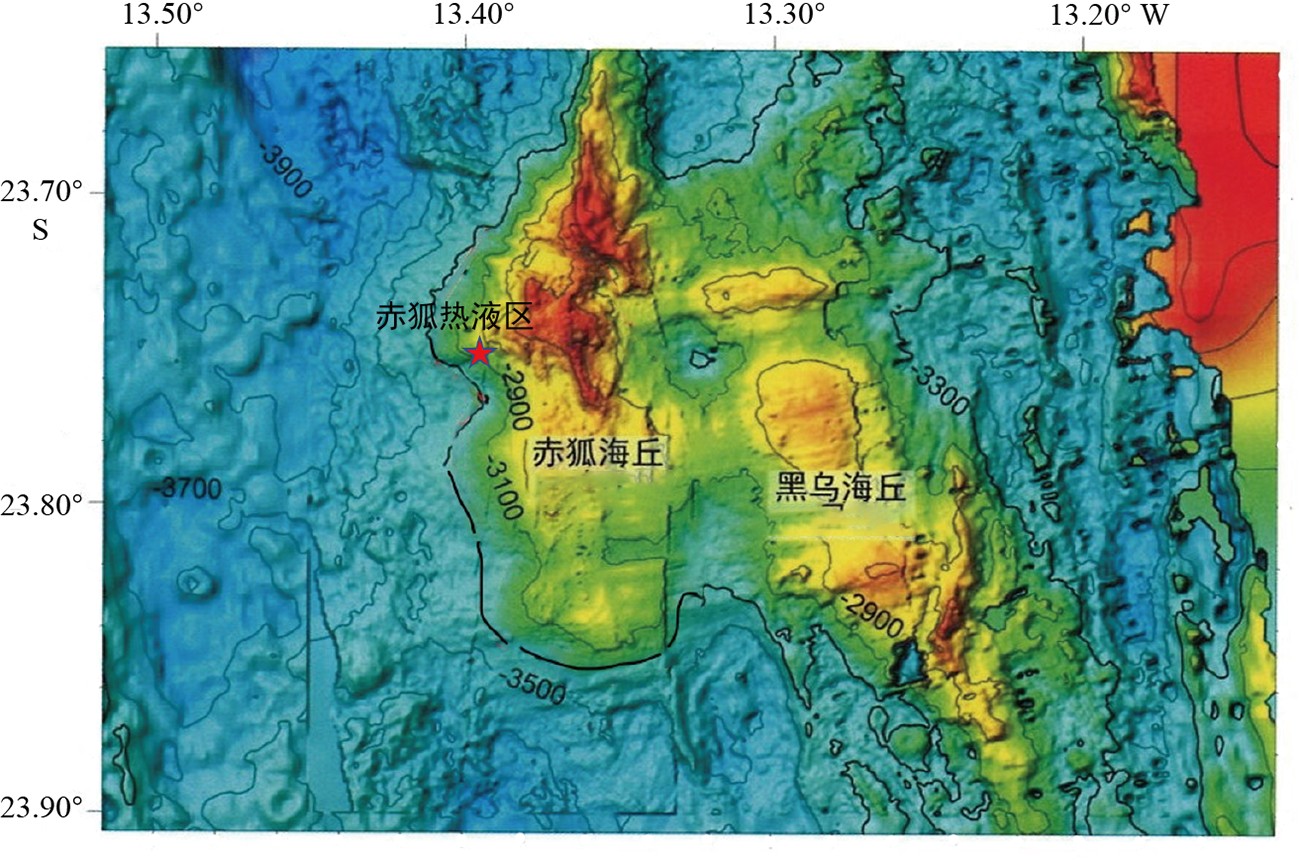
 下载:
下载:

